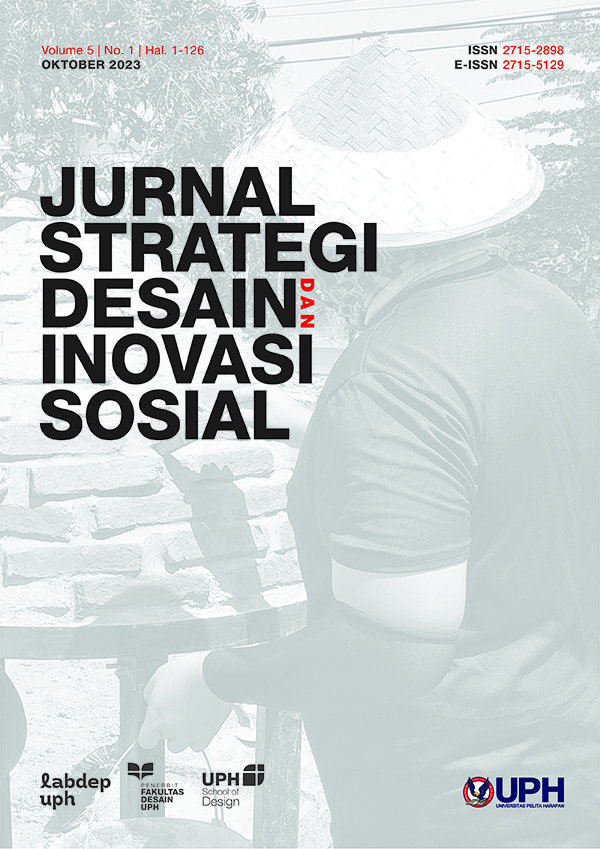Atmosphere and Materiality Respond to Rural Area Development. Case Study: Gereja Oikumene Sajau, North Borneo
DOI:
https://doi.org/10.37312/jsdis.v5i1.6500Περίληψη
A wood-dominated architecture has a distinct meaning once humans recognize it. This study seeks to reveal the materiality of wood as one of the primary contemporary materials in the development of Indonesian architecture. The study was conducted in the Sajau Ecumenical Church, made primarily of wood and situated in a rural area of North Borneo. Understanding the concept of wood provides benefits beyond just using it as a building material. It also helps to comprehend how its existence is valued and expressed. This character stimulates human sensitivity. In addition, the wood material tactically creates a particular ambiance for those engaging with it.
Αναφορές
Banham, R. (1996). A Critic Writes: Selected Essays by Reyner Banham. Berkeley: University of California Press.
Bello, N.D. (2015). Balancing Act: Successfully Combining Creativity and Accountability in The Practice of Marriage and Family Therapy. Dissertation. Nova Southeastern University.
Bloomer. K.C. dan Moore, C. W. (1977). Body, Memory, and Architecture. New Haven: Yale University Press
Böhme, G. (2017). Atmospheric Architectures: The Aesthetics of Felt Spaces. A.-Chr.
Cilesiz, S. (2010): A Phenomenological Approach to Experiences With Technology: Current State, Promise and Future Directions for Research, Journal of Education Tech Research Dev, 59:487-510.
Engels-Schwarzpaul (Ed. 2017). English: Bloomsbury Academic.
Hanifati, K. & Harjoko, T.Y. (2020). Arsitektur Sebagai Fenomena Kehadiran Manusia. SIAR 2020: Seminar Ilmiah Arsitektur.
Holl. S. (2006). Luminosity / Porosity. Nogizaka: Toto Publisher.
Holl, S. (1996): Intertwining, Princeton Architectural Press, New York.
Lewis, M. and Staehler, T. (2010). Phenomenology: An Introduction. London: Continuum.
Malnar, J. M., dan Vodvarka, F. (2004): Sensory Design, University of Minnesota Press, Minneapolis.
Merleau-Ponty, M. (2002): Phenomenology of Perception, Routledge Classic, London and New York.
Miller, D. (2005): Materiality, Duke University Press, Durham and London.
Moustakas, C. (1994): Phenomenological Research Methods. Sage Publications, London New Delhi.
Pallasma, J. (2009), The Thinking Hand: Existential and Embodied Wisdom in Architecture, John Wiley and Sons, West Sussex.
Pallasma, J. (2012): Matter, Hapticity and Time, in Understanding Architecture edited by Robert McCarter, Phaidon Press Limited, London.
Pallasma, J. (2012): The Eyes of The Skin: Architecture and The Senses, West, John Wiley Sons, West Sussex.
Sofian, Tony. (2021). Materialitas Dan Sensibilitas: Studi Fenomenologis Material Arsitektural Bambu, Beton, Batu Bata Dan Kayu. S3-Disertasi. Sekolah Arsitektur, Perencanaan dan Pengembangan Kebijakan (SAPPK). Institut Teknologi Bandung.
Sparrow, T. (2016). Phenomenology for the Twenty-First Century. J.A. Simmons, J.E. Hackett (eds.). Slippery Rock University, Slippery Rock, PA, USA.
Yuksel, P. dan Yildirim, S. (2015): Theoretical Frameworks, Methods, and Procedures for Conducting Phenomenological Studies in Educational Settings, Journal of Qualitative Inquiry, 1-20.
Λήψεις
Δημοσιευμένα
Τεύχος
Ενότητα
Άδεια
Dengan mempublikasikan artikel pada Jurnal Strategi Desain dan Inovasi Sosial (JSDIS), penulis setuju bahwa:
- Penulis memegang penuh hak cipta atas artikel yang dipublikasikan.
- Penulis tidak pernah mempublikaskan artikel penulis dalam publikasi lainnya.
- Penulis dilarang mempublikasikan artikel yang sudah diterbitkan JSDIS tanpa mencantumkan bahwa artikel tersebut sebelumnya sudah pernah diterbitkan di JSDIS.
- Redaksi JSDIS memiliki hak untuk mempublikasikan, mendistribusikan, dan menggunakan artikel penulis untuk keperluan publikasi jurnal dengan tetap mencantumkan penulis sebagai pemegang hak cipta.



.jpg)
